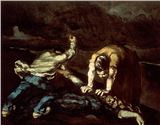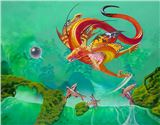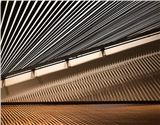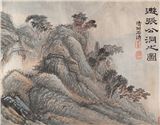LeRoy DeJolie
A NAVAJO PHOTOGRAPHER MAKES A SPECIALTY LANDSCAPES IN HIS HOMELAND ALTHOUGH HE is ONE OF ONLY a handful of successful Native American photographers,
Dottie Indyke / Southwest Art
Dec 01, 2005

ALTHOUGH HE is ONE OF ONLY a handful of successful Native American photographers, LeRoy Dejolie can claim a place in the larger ranks of distinguished western landscape photographers. For one thing, his camera, which is a large-format Deardorf manufactured in 1952, is the same model Ansel Adams used to capture Yosemite a half-century ago. Like Adams, Dejolie`s practice is to fill his pack with pounds of gear, then squeeze into slot canyons and scramble atop mesas to memorialize the west`s natural landscape-in his case, his ancestral birthplace.
His personal connection to Navajoland, where he was raised herding sheep and living in a traditional dirt-floored hogan, adds meaning to his indelible images of windows cut by weather into layered sandstone and vast carpets of desert interrupted by the odd-shaped rock tower. In a book published earlier this year by Arizona Highways, 60 of Dejolie`s pictures are augmented by bits of Navajo legend associated with these arresting places. At Shiprock, the story goes, Sired by Water convinced his twin brother not to kill Hunger Monster, because hunger helped people enjoy their food. The thousand-foot Mittens, a pair of rock spires anchoring Monument Valley, are, according to Navajo lore, hands left by the spirits to signify their future return.
"I love my land," says Dejolie, who is 45 and lives in Page, AZ. He`s referring to the Navajo reservation, bordered by four mountains sacred to the Navajo people: Mount Blanca, Mount Taylor, Mount Hesperus, and the San Francisco Peaks. Navajo country, according to the Navajo people, is an area that spans parts of modern-day New Mexico, Arizona, Utah, and Colorado.
DEJOLIE FIRST PICKED UP A CAMERA when he was 19, having learned the technical rudiments from his father, a Korean War photographer. The older man`s passion for the craft impressed his son: Dejolie would follow his dad on picture-taking expeditions near their home on the Kaibito Plateau and wake up late at night to find him poring over photography books.
"To this day, I`m doing the same thing with my daughters," Dejolie realizes. "I`m taking them out, showing them the sweet light-my phrase for that 45 seconds in the day when the sun casts a very warm tone on the monuments and the majestic mesas."
That sweet light informs the vast majority of Dejolie`s pictures, which are taken at dawn and dusk when golden light lines the southwestern clouds with purple and orange. In his beat-up Toyota truck, Dejolie has driven some 300,000 miles and hiked hundreds more, chipping his bones and twisting his ankles in his chase for such photos. Because he works with an 8-by-10 camera, where each flick of the shutter imprints a $20 negative, he can`t afford to be an indiscriminate shooter. He utilizes the colored zone system, based on Ansel Adams` black-and-white tonal method, which he has refined through trial and error.
Dejolie is largely self-taught; given his geographic isolation, there was no possibility of finding a mentor. Over the course of 28 years, he has built an inventory of more than 2,000 pictures, some shot for freelance assignments. Today, he feels secure in the knowledge that he can nail the image he wants on the first try. But only recently has his career gained national momentum. An Associated Press story about his work led to a story on NEC`s Today show and an invitation to exhibit at the Smithsonian`s Museum of the American Indian in Washington, DC.
One of his first milestones was meeting Bob Early, then editor of Arizona Highways, at a photojournalism workshop at San Juan College in Farmington, NM. "During one of the breaks I went up to him," Dejolie recalls. "He started spreading out my work on a light table, and he said, `Who are you and where have you been?`" Since then, Dejolie has been a contributing photographer for that magazine as well as for Native Peoples and other publications, a photography teacher, and the founder of his own program, My World, which encourages young Navajos to get behind the lens of a camera. Forty kids have been encouraged to document their lives on the reservation-for most, the only place they have ever seen-and to consider a career in photography.
By his own example, Dejolie opens his students` eyes to the cherished, spiritual nature of their homeland. "I consider Hunt`s Mesa to be the center of the earth," he says. "You go up there, you come back a different person. This land is the center of my heart as well."
Dejolie exhibits his photographs at Indian markets in Santa Fe, NM, and Phoenix, Flagstaff, and Tucson, AZ, and at www.dejolie.com.
ILLUSTRATIONS
COPYRIGHT: Copyright Active Interest Media Dec 2005. Provided by Proquest- CSA, LLC. All Rights Reserved. Only fair use as provided by the United States copyright law is permitted.
PROQUEST-CSA, LLC- MAKES NO WARRANTY REGARDING THE ACCURACY, COMPLETENESS, OR TIMELINESS OF THE LICENSED MATERIALS OR ANY WARRANTY, EXPRESS OR IMPLIED.






